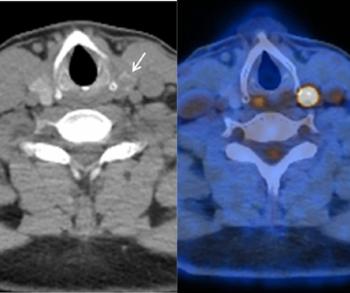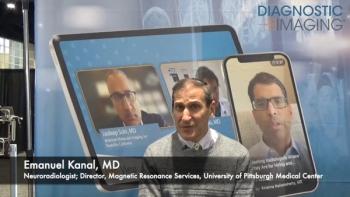The use of artificial intelligence (AI) for hippocampal segmentation on brain magnetic resonance imaging (MRI) offers “excellent diagnostic accuracy” for differentiating between normal findings and Alzheimer’s disease, according to the authors of a new meta-analysis.
For the meta-analysis, recently published in Academic Radiology, researchers reviewed brain MRI data from 27 studies to compare AI-enabled hippocampal segmentation for differentiating between Alzheimer’s disease and normal controls, between Alzheimer’s disease and mild cognitive impairment (MCI), and between MCI and normal controls.
While the meta-analysis revealed comparable segmentation accuracy for Alzheimer’s disease, MCI and normal controls (with Dice Similarity coefficient values of 82 percent, 85 percent and 86 percent respectively), the study authors found significant benefit in differentiating between Alzheimer’s disease and normal controls. For these populations, the AI-powered hippocampal segmentation on brain MRI provided an 87 percent sensitivity, 91 percent specificity and a 95 percent area under the receiver operating characteristic curve (AUC).
However, for differentiation between MCI and normal controls, the researchers noted a 79 percent sensitivity, a 74 percent specificity and an 83 percent AUC. AI-enabled hippocampal segmentation offered a 70 percent sensitivity, 76 percent specificity and an 80 percent AUC for differentiating between MCI and Alzheimer’s disease, according to the study authors.
“AI-assisted hippocampal segmentation achieves good accuracy and demonstrates promising diagnostic capabilities for distinguishing AD from NC, though differentiation between AD and MCI remains challenging,” wrote lead meta-analysis author Qi Wu, M.D., who is affiliated with the Department of Radiology at the Affiliated Hospital of Youjiang Medical University for Nationalities in Baise, China, and colleagues.
The researchers maintained that advances in deep learning technology have led to improved sensitivity and specificity over conventional approaches to hippocampus volume assessment in differentiating between Alzheimer’s disease and normal findings.
“This enhancement, likely due to deep learning architectures, can integrate multi-scale spatial features from segmented hippocampi to improve diagnostic precision. 3D (convolutional neural networks) can understand and extract complex morphology features from MRI and have recently been developed for hippocampus-based AD classification,” added Wu and colleagues.
Three Key Takeaways
1. High diagnostic accuracy for AD vs. normal controls (NC). AI-based hippocampal segmentation on brain MRI showed excellent performance in distinguishing AD from NC, with 87 percent sensitivity, 91 percent specificity, and 95 percent AUC, making it a promising tool for aiding AD diagnosis.
2. Limited differentiation between AD and mild cognitive impairment (MCI). The diagnostic performance of AI segmentation was lower when distinguishing AD from MCI (70 percent sensitivity, 76 percent specificity, 80 percent AUC), highlighting the challenge of detecting early-stage neurodegeneration using whole-hippocampus segmentation alone.
3. Need for advanced biomarkers and methods. Subtle, subfield-specific hippocampal changes in MCI may not be captured by current AI methods, suggesting a need for more detailed segmentation techniques or additional imaging biomarkers to improve early detection accuracy.
The reduced capability with MCI differentiation suggests that other markers beyond hippocampal segmentation are necessary to bolster clarity with early-stage neurodegeneration.
“These results align with evidence suggesting that hippocampal atrophy alone may not be sufficient for distinguishing MCI from AD, as hippocampal atrophy in early MCI often manifests as subtle subfield-specific changes (e.g., CA1 and subiculum) that may be inadequately captured by whole-hippocampus segmentation approaches,” noted Wu and colleagues.
(Editor’s note: For related content, see “MRI Study Demonstrates Link Between MASLD and Accelerated Brain Aging,” “FDA Clears Brain MRI-Based Software for Cortical Disarray Measurement” and “A Closer Look at the New Appropriate Use Criteria for Brain PET: An Interview with Philip Kuo, MD, Part 2.”)
In regard to limitations with the meta-analysis, the authors acknowledged that only four of the 27 reviewed studies included external validation outside of the initial cohort. They also conceded potential overfitting of the predictive model, noting a low risk of methodological quality bias in only five of the reviewed studies.





























